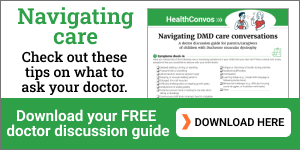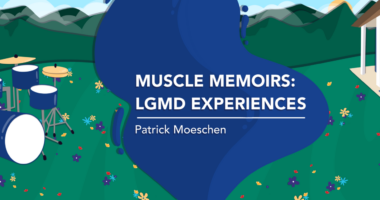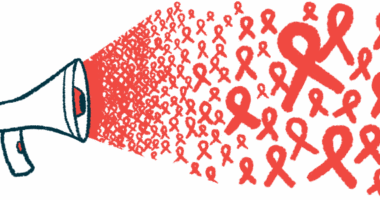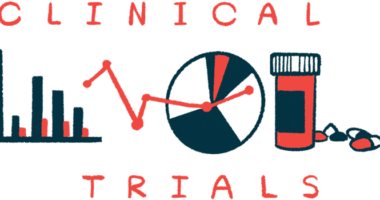Transitioning to adulthood with Duchenne muscular dystrophy
Last updated April 22, 2024, by Susie Strachan

Just like any other child, teenagers with Duchenne muscular dystrophy (DMD) should have many conversations about becoming an adult and possibly living independently. Transition planning is a continuous process, and the groundwork can start as early as 13-14 years old.
Making the transition may involve changing from pediatric to adult healthcare, developing life skills, exploring education options, and learning about the specific challenges for an adult living with DMD.
Physical changes and adaptations
DMD is the most common type of muscular dystrophy. It’s a progressive condition that causes muscle wasting, mainly of the skeletal muscles. It commonly affects more males than females.
While there isn’t a cure for DMD at this time, a number of treatments — including exon-skipping therapies and gene therapy — can help with symptoms and slow or halt disease progression.
Children and adults with DMD may need treatment for health issues such as cardiac complications, respiratory support, orthopedic problems, and gastrointestinal challenges. Over time, people with DMD may lose their mobility, along with control over their head and upper limbs.
When this happens, it may require:
- an increased dependency on mobility devices and other aids and adaptations such as orthotics and breathing aids
- a greater need for physiotherapy to increase mobility and reduce pain
- hiring personal care attendants to help with daily tasks such as grooming and eating.
Jake Marrazzo is a 21-year-old junior at Wheaton College in Massachusetts who was diagnosed with DMD at the age of 8. He has been a wheelchair user since age 12 and relies on personal care assistants at college. He lives in an accessible campus dormitory during the academic year.
“My symptoms have probably changed the most as I got older. Now, it’s a little bit harder for me to roll over in my bed,” Marrazzo says. “It’s a lot harder for me to reach things that I might have been able to reach before.”
Transitioning to adult healthcare
For a child growing up with an illness like DMD, making the change from pediatric to adult care can require careful coordination to ensure continuity of care.
During childhood, parents and caregivers typically assist with healthcare needs, handling tasks such as scheduling appointments, completing paperwork, and managing medications. But as you get older, the responsibility may shift to you.
Planning this transition can start early with the help of your parents, healthcare providers, and teachers.
You can discuss how you are going to make the change to adult care, including monitoring your own symptoms and practicing self-advocacy with new healthcare providers.
Making the transition may include:
- having an assessment of your current status, including medical issues or complications, and getting medical records for future providers
- coming up with specific goals, timelines, and action steps for the transition process
- contacting and interviewing healthcare providers who specialize in neuromuscular conditions like DMD.
You and your caregivers may have to deal with differences in care delivery, documentation practices, and communication styles compared with what you had in a pediatric setting.
For help in making the transition to adult care, look for healthcare institutions offering transition care programs. These programs can provide education, resources, and other support.
Peer groups also can provide valuable insights and perspectives from other young adults with DMD.
Other sources of information about healthcare transition include the following:
- CureDuchenne Cares offers virtual community events, workshops, and sessions, including information on making the transition to adult healthcare.
- Got Transition offers guidance on topics such as decision-making and parents “letting go of control” and tips for teens graduating high school.
- Muscular Dystrophy Association’s Young Adults program offers resources for teens and adults, covering education, employment, and independent living, along with personalized coaching sessions.
- Parent Project Muscular Dystrophy offers community support for teens, young adults, and their parents, as well as a healthcare transition toolkit.
For Marrazzo, the biggest change in moving from the pediatric to the adult side has been the ability to make his own healthcare decisions.
“I have more adult conversations with the doctors,” he says. “We go back and forth a lot about what I need, what’s best for me.” He also says there used to be a greater focus on his family as a whole, but now it is more about just him.
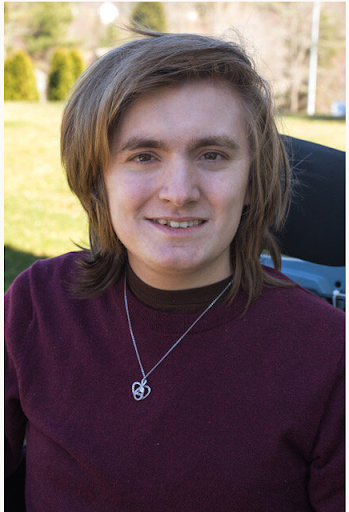
Jake Marrazzo, 21, is a junior at Wheaton College in Massachusetts who has Duchenne muscular dystrophy. (Photo courtesy of Jake Marrazzo)
His mother Sheryl Marrazzo says that rather than waiting for a “switch” to be flipped at age 18, it was helpful to involve her son in his healthcare decisions as early as possible.
At the same time, his parents taught life skills such as doing chores around the house, taking medications, and how to talk to his doctors.
“It’s important to treat them like any other kid,” she says. “Their parents won’t be there forever, so another thing to get used to is having other people, such as a personal assistant, take care of them.”
Marrazzo’s family took their time finding an adult healthcare team that works well with him. They now drive eight hours, twice a year, to see Marrazzo’s cardiologist, because the doctor is part of a healthcare team they trust.
“When they met, Jake loved how [his doctor] treated him like an adult,” Sheryl Marrazzo says.
Previously, many healthcare professionals would address their questions to her instead of her son.
“It used to make him so crazy,” she says. “Because they would talk to me and not him, just because he’s in a wheelchair.”
Finding the right living situation
If planning to move out of your parents’ or guardian’s home, finding a suitable place to live will depend on your individual needs, abilities, and preferences.
This may involve exploring options for independent living with the right support, such as:
- accessible housing that accommodates mobility aids and provides features such as wheelchair ramps, wide doorways, and accessible bathrooms
- supportive housing programs or assisted living facilities that offer varying levels of assistance with daily tasks
- personal care assistance to help with activities of daily living such as bathing, dressing, grooming, and meal preparation
- modifications to the home environment to improve accessibility and safety, such as installing lifts or grab bars in the bathroom
- installing adaptive devices such as environmental controls or voice-activated smart home systems.
When Marrazzo moved onto his college campus, he hired fellow students as personal care assistants to help with getting in and out of bed, putting food on the trays in the dining hall, and other tasks throughout his day.
“I started by asking students in the nursing program and athletes if they’d be interested, and explained what the job entails,” he says. “I’ve become friends with all of them and made some meaningful connections.”
Taking this active role in decision-making has helped Marrazzo increase his sense of independence.
He also joined the college’s accessibility board to give input on improvements such as installing more electric door switches and ramps, and housing students with accessibility requirements near other students of similar academic progress.
“When I started, I was put in an accessible room, but it wasn’t near any other freshmen,” he says. “It didn’t give me that connection to people in the same year as me.”
Higher education and work
In trying to make big life decisions, such as where to go for higher learning or choosing a career path, start by talking with the adults in your life.
High school counselors and teachers, professionals in your network, family and friends, and other young people with DMD can offer insight into options for education and possible careers.
Other good sources of information include:
- colleges and universities that have education advisers who can speak about academic programs and adapted learning environments
- career development centers that offer services such as resume writing assistance, job search strategies, and career workshops
- career exploration websites, job search engines, and professional networking sites
- networking events and professional organizations.
Explore career options that align with your interests, skills, and abilities, as well as accommodate any physical limitations associated with DMD. Look for vocational training, internships, or work experiences offering hands-on training and practical skills relevant to your chosen field.
Remember your rights: There are disability rights and workplace accommodations that are required by law under the Americans with Disabilities Act (ADA).
The ADA is a federal law that prohibits discrimination against people with disabilities in all areas of public life, including employment. Under the ADA, employers with 15 or more employees are required to provide reasonable accommodations to qualified individuals with disabilities to enable them to perform essential job functions.
This might include:
- flexible work schedules
- telecommuting options
- assistive technology
- modified workstations
- ergonomic furniture.
There are vocational programs, state agencies, and disability employment services that can assist you with finding employment, accessing job training and placement services, and connecting with employers who are committed to diversity and inclusion in the workplace.
Emotional well-being
The uncertain prognosis and unpredictable course of DMD can cause heightened anxiety and worries about your future.
As a youth or young adult, you may feel anxious about changes in your health, progression of symptoms, and uncertainties about your long-term prognosis.
Changes in your physical appearance, functional abilities, and mobility can affect your self-esteem and body image throughout the teenage years.
While you may have started taking on greater responsibility and independence in managing your own healthcare, you still may want ongoing parental support as you navigate the challenges of adulthood.
All these feelings are normal. It can help to know that you’re not alone and support and help is available. This can include mental health counseling, DMD support groups, and phone hotlines.
DMD support groups for young adults can connect you with your peers, which may be an opportunity to learn from the experiences of others living with DMD and get emotional support.
Some coping strategies that can support your mental health include:
- doing physical activities that are safe and enjoyable, such as adapted sports, swimming, or wheelchair exercises
- practicing self-care, such as getting enough rest, and eating nutritious foods
- staying connected with friends, family members, and peers through social activities
- being creative and expressing yourself through writing, art, music, or photography.
Building relationships and community
There are many ways you can create connections with others to make friends and find social support.
Some ideas include:
- attending social events
- exploring online groups
- doing a group hobby or recreational activity
- volunteering.
You also can explore resources and services offered by disability organizations, advocacy groups, and disability service providers in your area. Look for conferences or educational workshops on topics that interest you. These may be opportunities for connecting with others who share similar interests and aspirations.
Peer mentorship with older people who have DMD is another way to get guidance, advice, and support based on their learned experiences.
As a parent, it’s important not to hold your child back if they want to try something new, including trying sports like tennis or going on to higher education, says Sheryl Marrazzo, who works as a community engagement coordinator with CureDuchenne, counseling parents of newly diagnosed boys with DMD.
“I could have kept Jake home with me, but the best thing that ever happened to him was him leaving and going to school,” she says. “He really became the person he was meant to be.”
While living with DMD as a teenager and growing up isn’t easy, Marrazzo says the most important thing to remember is that you’re not alone.
“This isn’t a journey they have to go through by themselves,” he says. “There’s this huge circle of people that you can go to and talk with about these things.”
Now that he is older, Marrazzo has taken on the role of being a DMD advocate.
“When I talk with other kids who have Duchenne, they ask me all sorts of questions, like, ‘can you go to college?’” he says. “I’m living proof that it is possible.”
Muscular Dystrophy News Today is strictly a news and information website about the disease. It does not provide medical advice, diagnosis or treatment. This content is not intended to be a substitute for professional medical advice, diagnosis, or treatment. Always seek the advice of your physician or other qualified health provider with any questions you may have regarding a medical condition. Never disregard professional medical advice or delay in seeking it because of something you have read on this website.
Related articles

